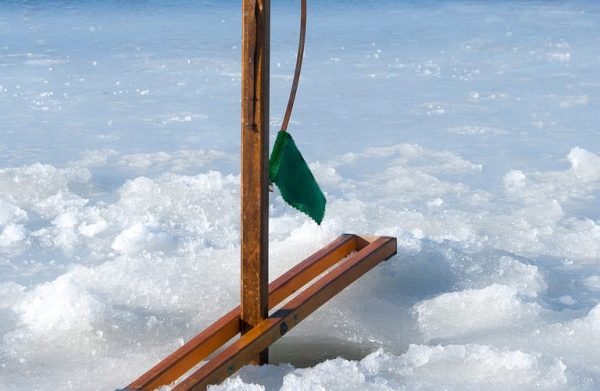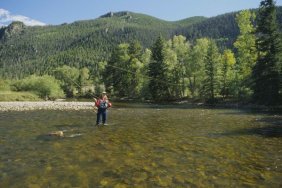Tip ups are one of most convenient tools ever invented for ice fishing, but to get the most out of them it’s important to follow a few critical steps.
Tip ups allow for hands-free fishing and a break from jigging and watching bobbers. When used properly, tip ups can help you catch more fish, because they allow you to fish more than one hole at a time. The anglers who are most successful with tip ups understand the best strategies for catching northern pike, walleyes and other species.
RELATED: 4 Top Ice Destinations in America
TESTING
Before you go out on the ice, it is important to inspect and test your tip ups to make sure they are working properly. Make sure they are spooled with fresh line and that the flag and spool are operating smoothly. This is an important step, because a tip up that is not functioning correctly will result in lost fish and plenty of headaches on the ice.
ICE FREE
There are plenty of varieties of tips ups, but the best choice is a thermal model that keeps your hole ice free. The warmth of these tip ups help ensure that ice does not mess with your line or the functioning of the tip up. They cost a little more, but the convenience is well worth the added expense.
LEADER
When pursuing fish like northern pike and walleye with a tip up it is important to use a metal leader, to prevent their sharp teeth from damaging or severing your line. A 6-8 inch leader is adequate for most situations and will improve your odds of landing a fish.
PLACEMENT
You can improve your odds of success by placing your tip ups and different depths. When you find a depth where there are active fish, move your other tip ups to a similar depth. Also try varying the line depth of your tip ups to find fish faster. Keeping your tip ups 10-20 yards away from each other will help you cover more water and find fish more quickly.
BAIT
Live bait is the best choice for tip ups. Sucker minnows or other large minnows are perfect for northerns and walleyes. Their movements in the water will be all you need to attract fish. However, it is important to occasionally check your minnows to make sure they are still alive and moving in the water. A dead minnow will drastically decrease your chances for success.
HOOK SETTING
When the flag pops up on your tip up, do not grab the tip up and start pulling. Be patient. It is important to wait until the spool stops in order to give the fish a chance to take the bait in its mouth. When the spool stops, give the line a yank to set the hook. Once the fish is hooked use your hands to retrieve the fish as quickly as possible. Lead the fish’s nose directly to the hole and pull it to the surface.
Photo credit: Flickr








